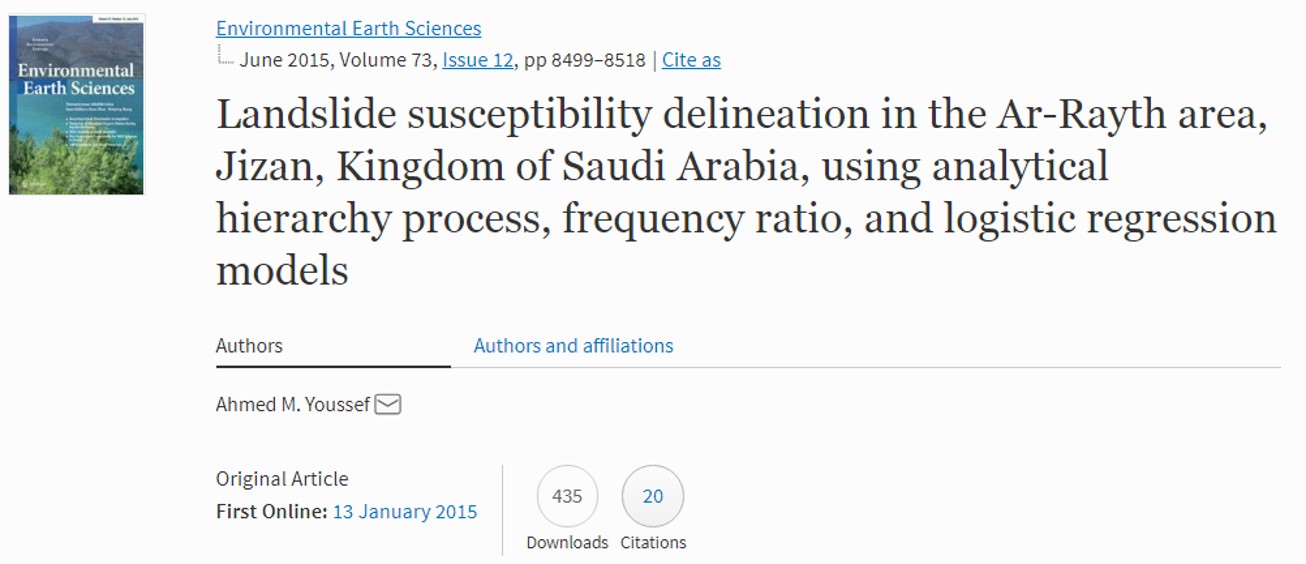Mountain areas in the southern western corner of the Kingdom of Saudi Arabia (KSA) frequently suffer from various types of landsides induced by rainstorms and anthropogenic activities. To mitigate these problems, landslide susceptibility mapping and classification is important to develop quick and safe mitigation or remediation measures and to help the decision making in future planning by identifying the most vulnerable areas. This paper summarizes the findings of a landslide susceptibility analysis in the Ar-Rayth area, Jizan, KSA, using an analytical hierarchy process (AHP), frequency ratio (FR), and logistic regression (LR) models with the aid of GIS tools and remote sensing data. The landslide inventory map was prepared according to historical data, interpretation of high-resolution satellite images (Geo-Eye 0.5 m resolution and QuickBird 0.6 m resolution), topographic maps (1:10,000), and verified by field investigations. An inventory map with 253 landslides locations was extracted from many sources. The landslide inventory was randomly divided into two datasets: 75 % for training the models and 25 % for validation. An enhanced thematic mapper plus 15 m satellite image acquired in 2006 was used for determining the Normalized Difference Vegetation Index. A contour map (1:10,000 with a 10 m contour interval) was converted to digital elevation model 10 m resolution and subsequently converted to slope, slope aspect, curvature, elevation, and drainage networks. Geological data obtained with the help of satellite images were used to prepare lithological units and lineaments. Roads were digitized from the high-resolution image and a rainfall map was prepared from the rainfall gauges distributed throughout the study area. All these data were used to construct a spatial database using GIS and image processing. Three landslide susceptibility maps were constructed; one on the basis of a heuristic method using an AHP, the other two on the basis of landslide inventories and causative factors, using FR and LR. Furthermore, each causative factor's weight was determined according to these three models and landslide susceptibility indices were calculated. For verification, receiver operating characteristic curves were calculated and the areas under the curve (AUC) for success rate are 0.755, 0.828, and 0.749 and for prediction rate are 0.708, 0.781, and 0.727 for the AHP, FR, and LR, respectively. In addition, the percentage of existing training landslides data in high and very high zones of the susceptibility maps is of 73.2, 85.31, and 88.59 % and for the validation landslides data is 73.2, 85.31, and 88.59 % for the AHP, FR, and LR, respectively. The findings indicated that the values of AUC are above 0.7 for both success and prediction rate which indicate these three models are suitable for susceptibility analysis. Also, percent of training and validation landslides data of high and very high zones indicate that LR model is more accurate followed by FR model and AHP model.


